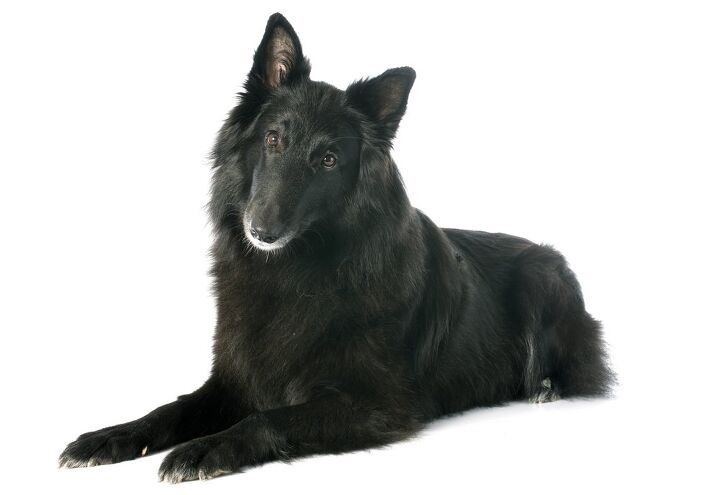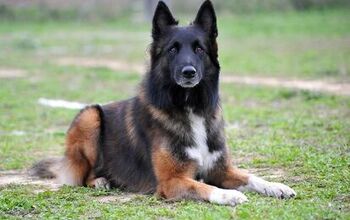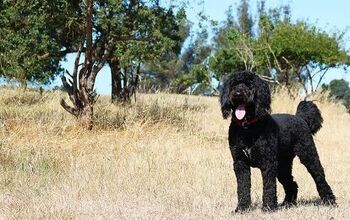Belgian Sheepdog


About Belgian Sheepdog
Elegant, sporting a lovely basic black coat, the Belgian Sheepdog is not only graceful but versatile as well. Don’t let his good looks fool you. This dog is a workaholic in disguise. His work ethic is second to none and he is happiest when he has specific duties to perform. This breed is incredibly intelligent and can learn to do almost anything, with proper training. The Belgium Sheepdog isn’t all work and no play. He is an active fellow and will keep the kids busy playing fetch or Frisbee for hours.
The Belgium Sheepdog is a vigilant and keen watchdog. His protective nature will ensure that you and your family are safe and that your home is protected as well. He is a great companion for families with active lifestyles and respectful children. To learn more about the beautiful Belgian Sheepdog, please continue reading.
Elegant, sporting a lovely basic black coat, the Belgian Sheepdog is not only graceful but versatile as well.
Originating in Belgium, the Belgian Sheepdog’s existence can be documented as far back as the 1800s. This breed was meant to herd livestock and guard the farm and family. The Belgian Sheepdog’s strong work ethic made him excel at this job. Today, he can be found working with police departments or living in suburbia with their families.
The Belgian Sheepdogs that we recognize today were developed by Nicholas Rose. His kennel was established in 1893 and his dogs were the ancestors of the modern day Belgian Sheepdogs. During the World Wars, this breed’s versatility was prized as they became messengers, guard dogs and customs agents.
The Belgian Sheepdog is a large dog and he will consume quite a bit of food. It’s best to feed dry kibble that is formulated for the dog’s particular activity level. The quality of food will help determine the amount of food the dog requires to stay healthy and fit.
Although he can be willful and stubborn, the Belgian Sheepdog is highly trainable with the right owner.
Although he can be willful and stubborn, the Belgian Sheepdog is highly trainable with the right owner. Most enjoy their training sessions as this breed feels the need to work and be productive. Training should always be done using positive methods. The reward and praise technique suits the Belgian Sheepdog best. Harsh methods will not work and will turn the dog off of training. Consistency and patience will help you to train your Belgian Sheepdog successfully.
Belgian Sheepdogs love training so much that they excel in many competitive dog sports. Obedience trials, herding competitions and agility courses are favorites of the breed. This breed is often used for police work, as service and guide dogs, therapy dogs and of course, herding dogs on farms.
The Belgian Sheepdog tips the scales between 60 and 75 pounds. It stands between 22 and 26 inches tall at the withers.
Vigilant and brave, the Belgian Sheepdog makes an exceptional guardian for active families. He connects quickly with his family and will protect them and the home with his life. Belgian Sheepdogs are good with well-mannered children however; they will not tolerate being pulled on or abused by them. He makes a great companion and playmate for kids who have been taught how to treat dogs.
Belgian Sheepdogs are active and they love to play and work. They are happiest when they have a distinct job to do. This breed is extremely intelligent and can be trained to perform all kinds of tasks including ones that humans hate to do such as picking up dirty socks and placing them in a hamper, bringing in the morning paper and even carrying groceries. Many have been trained to wipe their paws before entering the house; a trick few people can teach their kids to do!
The Belgian Sheepdog has an inherent desire to herd and chase things. They could take off running after children, bicycles, joggers or even cars. A secure fence is needed to keep the dog safely inside your yard.
Both elbow and hip dysplasia are prevalent in the breed. Other health issues such as epilepsy, cancer and progressive retinal atrophy have been diagnosed as well. Belgian Sheepdogs often have sensitivity to anesthesia so caution should be taken when considering any kind of sedation.
The average life span of the Belgian Sheepdog is between 10 and 12 years.
This breed requires a lot of exercise and would not be suitable for a sedentary family. The Belgian Sheepdog loves to run and play and could do so for long periods of time. He’ll play fetch, ball and Frisbee with the kids or happily go jogging with one of the adults. As long as he is active, the Belgian Sheepdog will be happy.
Without proper exercise, this breed can and will become destructive. They will bark incessantly and tear apart your furniture or chew up your shoes. All of this unwanted behavior can be avoided by keeping the Belgian Sheepdog physically active.
Vigilant and brave, the Belgian Sheepdog makes an exceptional guardian for active families.
The American Kennel Club states: “Elegant and proud, the Belgian Sheepdog is strong, but not bulky. During WWI, Belgian Sheepdogs distinguished themselves on the battlefields, serving as message carriers, ambulance dogs, and even pulling machine guns. It is no wonder that today this breed performs well in sports like obedience, herding, and tracking. They are also excellent workers, and work as search and rescue dogs, guide dogs, and therapy dogs. This breed is completely black, or may be black with white, although there are limitations to their white markings.” The Belgian Sheepdog was recognized by the American Kennel Club in 1912.
The striking double coat of the Belgian Sheepdog has a long and harsh topcoat and a soft and thick undercoat. The head, ears and leg fronts have a short coat while the rest of the body sports an abundance of long fur. This breed has a soft mane or collarette at the neck. The Belgian Sheepdog should be solid black however; a bit of white between the pads or on the rear toes is acceptable. Any white on the front toes is considered to be a fault.
Belgian Sheepdogs shed a lot of coat throughout the year so brushing is a daily event. A complete and thorough brushing should be done weekly as well. Bathing is only necessary when the dog begins to smell badly or has become dirty.
Belgian Sheepdog puppies are fluffy and soft but they can become unruly without training being started immediately. Puppy kindergarten classes will help give the pup the basics as to how training works as well as help to establish you as being the pack leader. Socialization is extremely important so the puppy should be introduced to new people, things, sounds and sights to help him learn social skills.

Amy Tokic, Editor of PetGuide.com, is a passionate animal lover and proud pet parent of Oscar, a Shih Tzu/Chihuahua cross, and Zed, a Japanese Chin. Her love of animals began in kindergarten, when she brought her stuffed dog Snoopy into class with her every day. Now, she writes about her adventures in pet ownership and tirelessly researches products, news and health related issues she can share with other animal enthusiasts. In her free time, Amy loves perusing used book and record stores, obsessing over the latest pet products available and chasing squirrels with wild abandon (a habit attributed to spending too much time with her pooches).
More by Amy Tokic

























